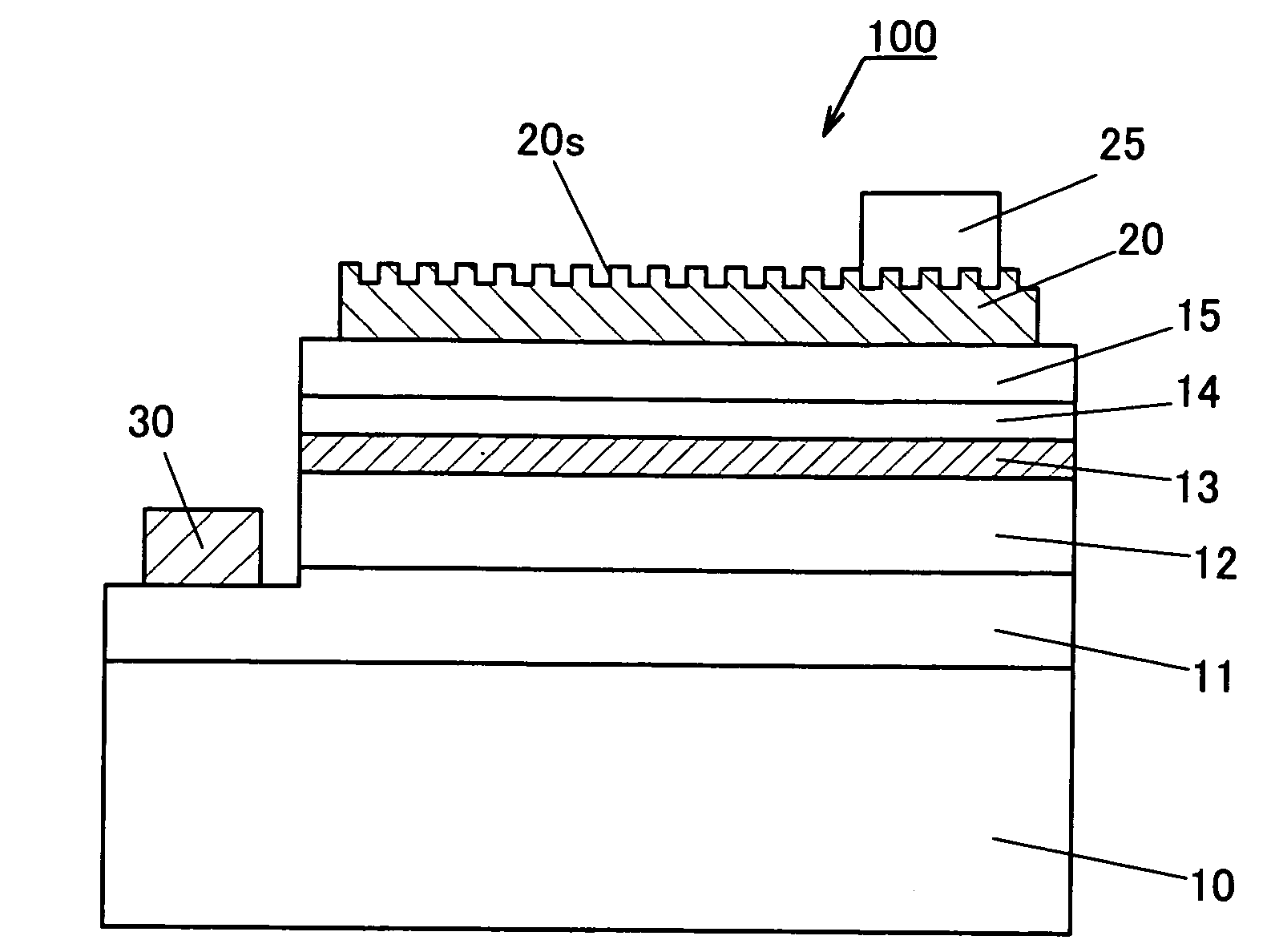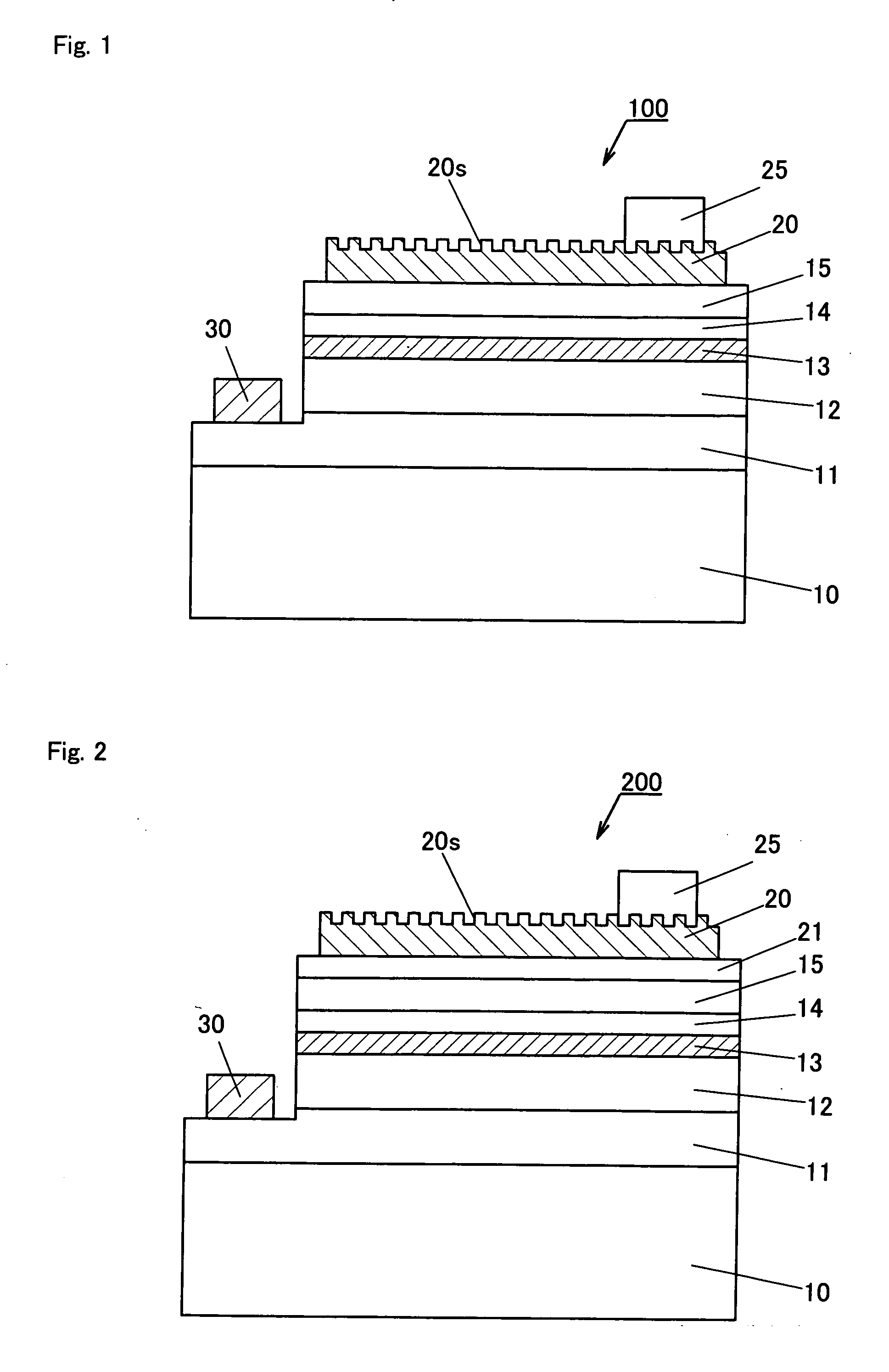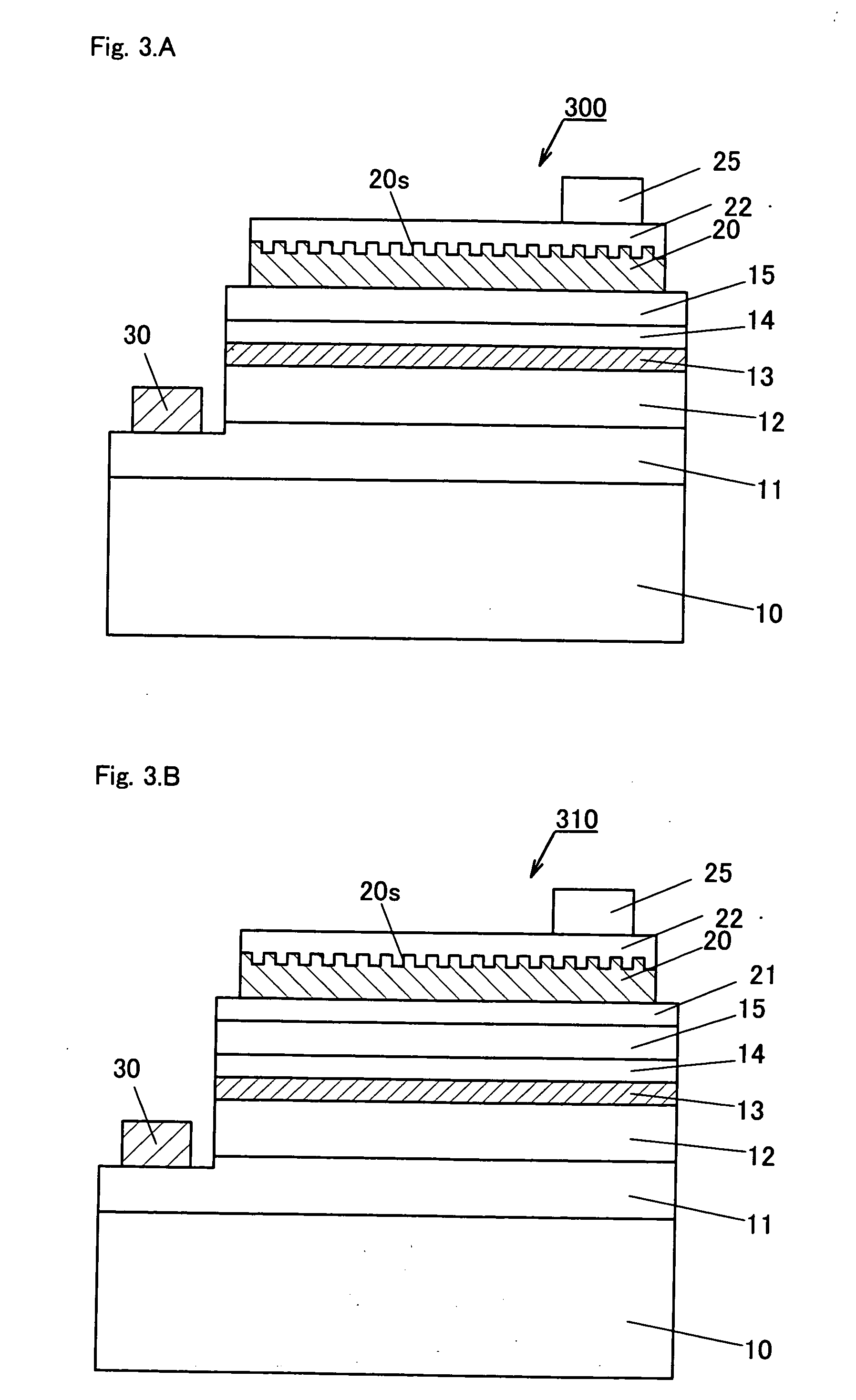Group III nitride-based compound semiconductor light-emitting device
a compound semiconductor and light-emitting device technology, applied in the direction of semiconductor devices, basic electric elements, electrical appliances, etc., can solve the problem of low light extraction performance from the light-emitting layer to the outside, and achieve the effect of reducing resistivity, reducing density, and facilitating performan
- Summary
- Abstract
- Description
- Claims
- Application Information
AI Technical Summary
Benefits of technology
Problems solved by technology
Method used
Image
Examples
embodiment 1
[0037]FIG. 1 is a cross-sectional view of the configuration of a Group III nitride-based compound semiconductor light-emitting device 100 according to Embodiment 1 of the present invention. The Group III nitride-based compound semiconductor light-emitting device 100 includes a sapphire substrate 10; an aluminum nitride (AlN) buffer layer (thickness: about 15 nm) (not illustrated) provided on the substrate 10; and a silicon (Si)-doped GaN n-contact layer 11 (thickness: about 4 μm) formed on the buffer layer. On the n-contact layer 11 is provided an n-cladding layer 12 (thickness: about 74 nm) formed of 10 layer units, each including an undoped In0.1Ga0.9N layer, an undoped GaN layer, and a silicon (Si)-doped GaN layer.
[0038]On the n-cladding layer 12 is provided a light-emitting layer 13 having a multiple quantum well (MQW) structure including alternately stacked eight well layers and eight barrier layers, in which each well layer is formed of an In0.2Ga0.8N layer (thickness: about 3...
embodiment 2
[0058]FIG. 2 is a cross-sectional view of the configuration of a Group III nitride-based compound semiconductor light-emitting device 200 according to Embodiment 2 of the present invention. The Group III nitride-based compound semiconductor light-emitting device 200 shown in FIG. 2 has the same configuration as the Group III nitride-based compound semiconductor light-emitting device 100 shown in FIG. 1, except that a transparent, electrically conductive layer 21 made of indium tin oxide (ITO) and having a thickness of 50 nm (i.e., less than 1 / (4n) of the emission wavelength (470 nm) in the air of the light emitted from the light-emitting layer 13 (wherein n represents the refractive index of ITO)) is provided between the p-type GaN layer 15 and the transparent electrode 20 made of niobium titanium oxide (niobium: 3 mol %). The transparent, electrically conductive layer 21 made of ITO having low resistivity is envisaged to exhibit the effect of reducing the diffusion resistance (in a...
embodiment 3
[0059]FIG. 3A is a cross-sectional view of the configuration of a Group III nitride-based compound semiconductor light-emitting device 300 according to Embodiment 3 of the present invention. The Group III nitride-based compound semiconductor light-emitting device 300 shown in FIG. 3A has the same configuration as the Group III nitride-based compound semiconductor light-emitting device 100 shown in FIG. 1, except that the top surface of the transparent electrode 20 made of niobium titanium oxide (niobium: 3 mol %) is covered with a transparent, electrically conductive layer 22 made of indium tin oxide (ITO) and having a thickness of 200 nm. By virtue of addition of the transparent, electrically conductive layer 22 made of ITO, the diffusion resistance (in a plane direction) of the positive electrode can be reduced. FIG. 3B is a cross-sectional view of the configuration of a Group III nitride-based compound semiconductor light-emitting device 310, which is a modification of Embodiment...
PUM
| Property | Measurement | Unit |
|---|---|---|
| refractive index | aaaaa | aaaaa |
| refractive index | aaaaa | aaaaa |
| total thickness | aaaaa | aaaaa |
Abstract
Description
Claims
Application Information
 Login to View More
Login to View More - R&D
- Intellectual Property
- Life Sciences
- Materials
- Tech Scout
- Unparalleled Data Quality
- Higher Quality Content
- 60% Fewer Hallucinations
Browse by: Latest US Patents, China's latest patents, Technical Efficacy Thesaurus, Application Domain, Technology Topic, Popular Technical Reports.
© 2025 PatSnap. All rights reserved.Legal|Privacy policy|Modern Slavery Act Transparency Statement|Sitemap|About US| Contact US: help@patsnap.com



